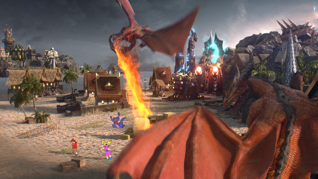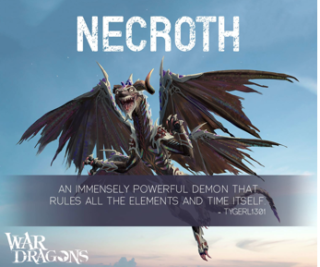Whether it’s with a mixed reality theme park located in Lindon, Utah, or a “hyper-reality” experience based on the Ghostbusters franchise shown at Madame Tussauds New York, The Void has established a reputation for creating premier location-based virtual reality experiences for attendees to enjoy. Developed in partnership with Sony Pictures, Ghostbusters: Dimension debuted at Madame Tussauds New York last week and gives attendees a chance to see what it’s like to put on a proton pack and trap some ghosts. It’s the Void’s first public installation and it marks the start of more things to come.
James Jensen, chief visionary officer of The Void, talked to [a]listdaily from the Ghostbusters: Dimension premiere about working with Sony Pictures to develop the hyper-reality experience and what location-based VR could mean for the future of entertainment.
 How did the partnership between The Void and Sony Pictures for a Ghostbusters hyper-reality experience get started?
How did the partnership between The Void and Sony Pictures for a Ghostbusters hyper-reality experience get started?
At The Void, we opened a public beta where people could pay to come in and see our demos, and a Sony executive producer flew in with his son. He paid for a ticket, went through the experience, and started talking to us. Ghostbusters came up, then Tracy Hickman [The Void’s head of story development] and Curtis Hickman [The Void’s chief creative officer] created a storyline and pitched it to the Sony folks. Ivan [Reitman] and everyone said it was amazing, and we’ve got to do this.
What are some of the challenges with working a classic franchise such as Ghostbusters?
The challenges were so welcomed! We couldn’t ask for a more perfect match of our hardware, the Ghostbusters hardware, and Madame Tussauds New York. The challenges were minimal working with Sony; they were great. We worked very closely with Ivan on the experience to make sure it had comedy but was scary—all the things Ghostbusters is.
How did you work with Sony to ensure an authentic Ghostbusters experience?
We worked with Ivan and Jake Zim [SVP of virtual reality for Sony Pictures] on the Sony side to make sure the facts and things we were doing matched the movie. They also gave us a lot of freedom to create our own ghosts, so inside Ghostbusters: Dimension, you’ll see custom Void ghosts that were created in collaboration with Sony.
Do you see virtual reality as having a better chance of success with location-based experiences than with home entertainment?
From The Void’s perspective, hyper-reality and location-based experiences will spread faster right now because there’s no barrier to entry. You pay for a ticket, and you get to go have the best experience of your life. That barrier to entry is really tough in the home market.
We hope to be people’s first experience in virtual reality/hyper-reality so that they’ll want it at home. We don’t feel like we compete with the home market at all—we feel like we help the home market. When people see this, they’re going to want it at home, and we hope that we have the right partnerships in place so that they can take it home with them.
So Ghostbusters: Dimension, or an experience like it, will be adapted for home VR someday?
Yes, that’s actually a part of our roadmap at The Void. We want people to have an experience at The Void, but then go home and continue to play, where they’ll earn items and upgrades. So, when they come back next time, they’ll have a new proton pack, character or something else that they’ll want to use to change the experience up.
How do you think VR will impact the entertainment industry?
I think it’s just going to explode—all of the technologies and software development. We’re working really close with Unity and Unreal. Then on the hardware side, with Nvidia and Intel. They’re all amplifying this to meet the requirements of virtual reality. I think you’re going to see new [graphics] cards, new software and new technology being created very fast to keep up with the demand of what people want. I feel like The Void pioneering hyper-reality is going to push people to get that out there.
We’re always going to be pushing the envelope on our experiences. You’ll always have the highest quality experience that is possible at The Void with the technology and software that we have.
Does The Void use proprietary technology for the Ghostbusters: Dimension experience?
Yes, the Rapture Gear. We’re on several different tracks with all of our hardware. The [haptic feedback] vest and back-top computer are almost complete. The HMD [Head Mounted Display] is in several different states. The one being used now is a hybrid of a couple different things, but it’s in our form factor.
What was your feeling when you went through the completed version of Ghostbusters: Dimension for the first time?
That was just a few hours ago! [laughs] No, it’s been a process, and it’s a little tough to say “completed,” because you have to run hundreds of people through it to see how they react. We’ve been doing that over the last few months and making little iterations and changes to make sure the flow works, that the people have a good experience, and that they’re enjoying it. We are going to keep iterating on that, and since we aren’t constrained like the normal market, we can release new software and hardware updates. So you’ll see those updates at Madame Tussauds over the next few months.
What are the challenges in promoting a location-based VR experience, either at Madame Tussauds New York or The Void attraction in Utah?
I think one of the biggest challenges is getting people to understand what it is. You can’t understand what it is until you go out and see it. In the past, we were reliant on people going through and then spreading the word. It’s really easy once somebody goes through it. [They say] “It’s like nothing you’ve ever seen. You’ve got to go see this thing!” That spreads the word, and we’ve seen that with everything else that we’ve done.
I think inherently, as human beings, we want to go have an experience and come back from it. So the sales pitch is pretty easy. It’s something we all want to do—we want to go into these worlds and explore them.




 How did this Vine deal come about?
How did this Vine deal come about?